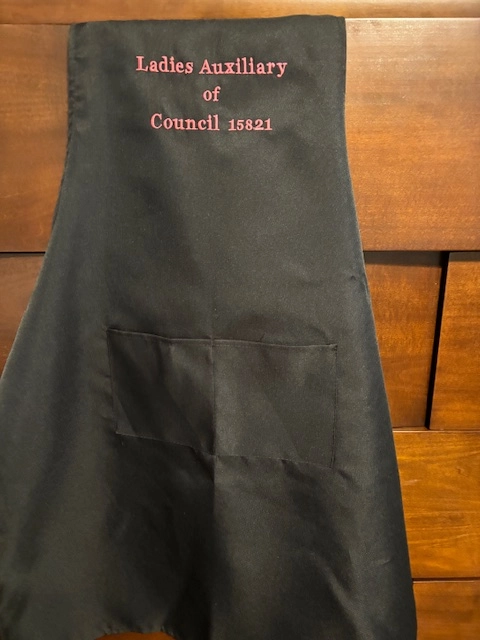Sophisticated Monogramming on Towels for a Touch of High-end
The Art of Customized Needlework: Opening the Keys to Creating Unique and Remarkable Layouts
Needlework, a craft soaked in practice and creativity, holds within its intricate stitches the power to transform fabric into a canvas of unique expression. The secrets to creating custom-made needlework styles that mesmerize the eye and leave an enduring impact depend on a delicate balance of technique, creativity, and attention to information. As we delve into the globe of personalized needlework, we uncover the nuanced interplay between thread option, sew intricacy, and design personalization that elevates a mere garment to a job of art. Join us on a trip with the art of customized needlework as we unwind the secrets behind crafting really memorable and unique productions.
Picking the Right Embroidery Threads
When selecting embroidery threads, what crucial factors should you consider to make sure the finest outcomes for your customized styles? The selection of needlework thread is crucial in identifying the last end result of your stitched design. Among the main factors to consider is the product of the string. Different materials such as cotton, polyester, rayon, and silk offer differing degrees of luster, resilience, and structure. It is crucial to pick a string product that complements the textile you are embroidering on and straightens with the preferred appearance of the design.
Thicker strings can include measurement and structure to your layout, while finer threads are optimal for intricate information and small text. In addition, taking into consideration the shade fastness and washability of the thread is vital to make sure that your custom designs preserve their top quality and vibrancy over time.
Discovering Various Stitch Techniques
To dive into the realm of 'Checking out Various Stitch Techniques', one should grasp the ins and outs and nuances that each stitching approach brings to the art of needlework. Different stitch strategies not just include aesthetic passion but also contribute to the general texture and measurement of the design. One preferred stitch technique is the satin stitch, which entails very closely stuffed parallel stitches to develop a smooth and shiny surface area, perfect for completing forms and creating strong outlines.
On the other hand, the backstitch is a versatile strategy commonly used for detailing and including great information. It entails stitching backward to produce a strong line of embroidery. In addition, the French knot stitch includes a tactile element to designs, ideal for developing textured accents like blossom facilities or attractive touches.
Discovering different stitch techniques permits embroiderers to have fun with light, darkness, and deepness within their layouts, elevating the aesthetic allure and imaginative quality of their embroidery projects. By understanding various stitching techniques, one can unlock unlimited opportunities for producing unique and memorable customized embroidery pieces.
Incorporating Personalized Style Aspects
Having explored the complexities of different stitch techniques such as the satin stitch, backstitch, and French knot, the emphasis currently moves in the direction of including personalized design elements in custom-made needlework tasks. Individualized style aspects play a critical duty in making embroidery projects absolutely one-of-a-kind and unforgettable. One method to include visit here customization is by including initials, you could try here names, or considerable dates to the design. This not just includes a tailored touch yet likewise enhances the nostalgic worth of the needlework piece.
Another means to integrate tailored style components is by consisting of symbols or themes that hold unique significance to the recipient or show their rate of interests and personality. As an example, incorporating a preferred blossom, animal, or hobby-related icon can make the needlework layout much more purposeful and customized. Furthermore, picking colors that reverberate with the recipient or line up with the desired theme can even more improve the customization of the embroidery project.
Grasping the Art of Shade Control
One trick aspect of color control is understanding shade theory. This consists of knowing exactly how various shades communicate with each various other, the feelings they convey, and just how they can be combined to create aesthetically appealing styles. By using shade theory concepts, embroiderers can produce unified shade palettes that improve the overall appearance of the style.
Additionally, focusing on comparison is essential in shade control. Utilizing contrasting colors can aid specific components of the design pop, improve clarity, and produce a visually dynamic embroidery item. By understanding the art of shade coordination, embroiderers can elevate their layouts and develop remarkable pieces that resonate with clients and audiences alike.
Enhancing Texture With Advanced Needlework Stitches

French knots, as an example, are best for including little, elevated dots to your design, simulating the appearance of grains or developing a distinctive surface area. Bullion knots, on the other hand, can be used to create twisted, ropelike elements that add a lavish feeling to the needlework. Seed sewing involves tiny, scattered stitches that can complete areas with a multicolor structure, while turkey work produces cosy, dimensional accents reminiscent of animal fur or foliage. Trying out these advanced embroidery stitches permits you to press the boundaries of conventional embroidery and create truly unique and visually enticing textures in your styles.
Verdict
Finally, the art of personalized needlework involves a mix of selecting the best strings, discovering numerous stitch methods, integrating customized layout aspects, mastering color sychronisation, and enhancing appearance with sophisticated stitches. By recognizing and carrying out these crucial elements, embroiderers can develop one-of-a-kind and unforgettable layouts that showcase their creative thinking and skill. Needlework lovers can unlock the secrets to producing gorgeous and custom pieces that attract attention and leave a long lasting perception.